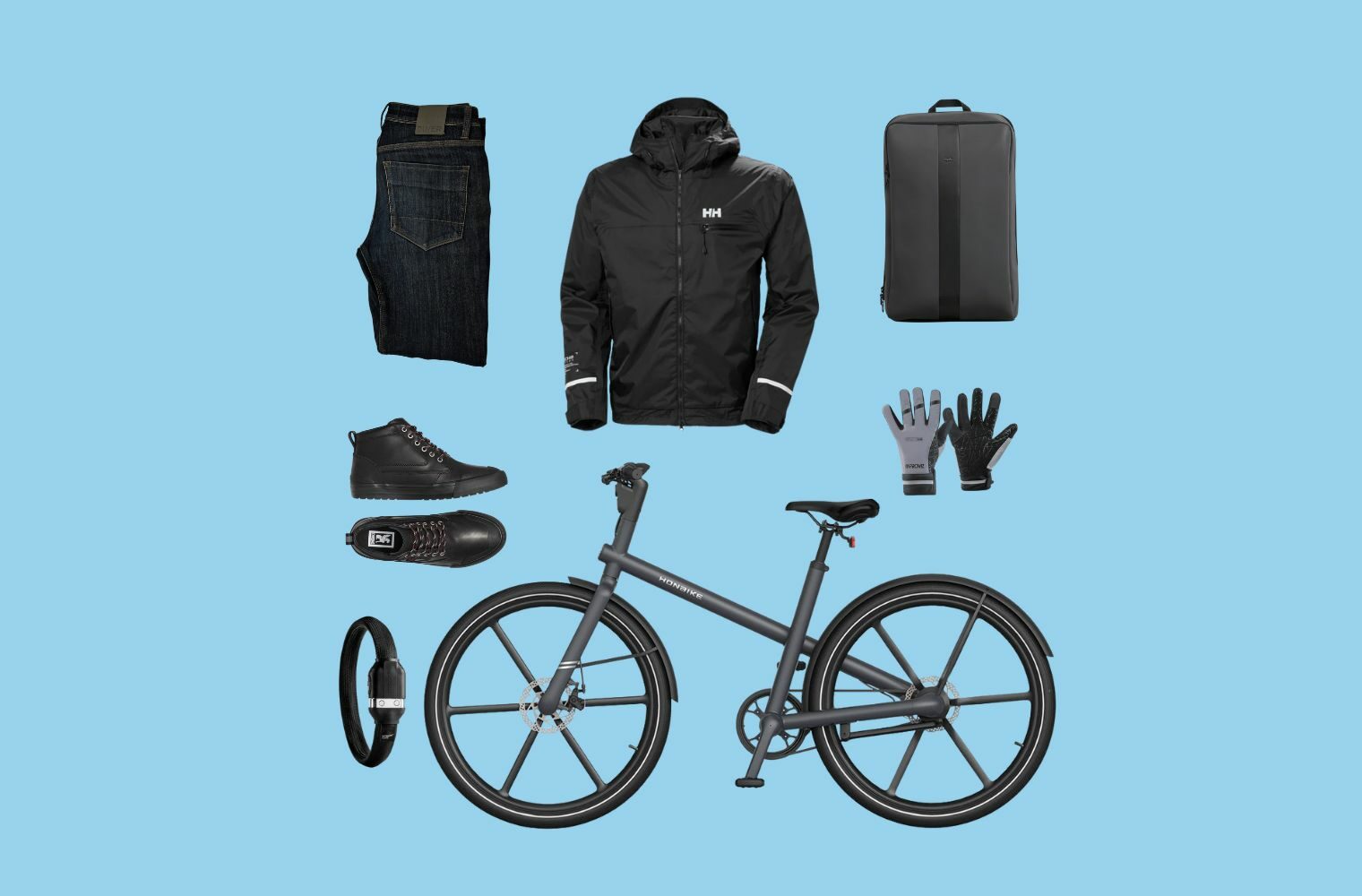This post may contain affiliate links, which help to keep Discerning Cyclist rolling. Learn more.
Perhaps it’s this time of year? Perhaps you’ve become utterly disillusioned with the shambles and expense of public transport? Maybe you live in a remote area and want to lower your carbon footprint by driving less? It’s very likely that you may want to get fitter and be kinder to the environment…
Whatever your reason for getting on your bike to commute, it can be disheartening when all your good intentions are crushed by the fact that it’s just not as easy as you thought it would be.
But take heart. Cycling to work doesn’t have to be painful. If you stick with it and follow our helpful tips, then it’s likely you’ll never look back, and your only regret might be not doing it sooner.
Hopefully you’ll soon be joining the increasing number of bike commuters in the UK. You’ll find it an energising experience in the morning and a fantastic way of winding down mentally at the end of the working day. I had a profoundly stressful job for a number of years and the cycle home cleared my head, to the extent where I used to purposefully find longer routes on my return.
It’s never too late, or too early, to start exercising by cycling to work. You’ll be healthier for it, and there are certainly a number of ways for you to make it easier on yourself as you begin.

Does Cycling Get Easier the More You Do it?
Cycling does get easier the more you do it. Whether you’re cycling five days a week or sticking to two or three, you’ll find that as the weeks pass you’re finding the same journey less of a struggle. And as your fitness level increases, so will your confidence.
And the good news is that cycling is a relatively low impact exercise so you can become fitter without risking injuries or strains.
How Long Does it Take for Your Body to Get Used to Cycling?
Depending on your initial level of fitness and the length (and terrain) of your journey, it could take around two to three months to reach a point where you’re cycling up to five days a week and feeling comfortable.
Of course, you probably won’t be starting with five days a week. If you’re new to cycling, this would be overdoing it. You’ll want to start slow, allowing time for your body to rest and to adjust. This way, you’ll gradually begin to experience results without feeling like your journey to work is a gruesome endurance test.
Why Cycling Gets Easier Over Time
Put simply, cycling gets easier over time because of your body and your mind’s positive response to the exercise that you’re doing. You’re becoming fitter and stronger.
In a nutshell, you’re feeling the benefits. But let’s break this down into specifics:
– Improved Fitness
Cycling is an aerobic exercise, and even in the first few weeks you’ll improve your cardiovascular endurance. Regular rides will increase your lung capacity and strengthen your heart muscle, reducing the risk of cardiovascular disease. And with the right diet, you’ll also lose body fat.
– Increased Strength
Through resistance, you’ll build muscle, which increases your metabolism and burns more calories even when you’re resting afterwards.
– Improved Circulation
Cycling stimulates the flow of blood, improving your circulation which in turn helps reduce fatigue.
– More Energy
As your health and stamina improve, your energy levels will increase. You’ll also be boosting your immune system.
– Improved Mental Health
Becoming healthier and fitter has an enormous impact on mental health. Regular cycling can reduce stress levels, increase confidence and promote a more positive outlook. With all this going on, nothing will be able to stop you!
– Better Technique
The more you cycle, the more your skills will develop. You’ll handle the bike better on corners and up and down hills (if hills are part of your commute). You’ll also naturally begin to understand when to pace and when to push yourself.
– Route Planning
Speaking of hills, you may want to avoid them altogether if possible, at least in the beginning. You’ll find your ride easier as you find routes that are less demanding.
How to Make Your Bike Commute Easier [9 Tips]
So, you’ve made the decision to start cycling to work. Your journey towards a more sustainable and healthy commute is just beginning. To ensure that it will be as pain-free as possible, we’ve put together nine useful tips to help you:
1. Ease Into it
And by this, I mean try to avoid a gung-ho ‘all or nothing’ attitude. Enthusiasm is great, but if you launch immediately into a punishing five-day-a-week schedule you’ll become exhausted and may feel like giving up. Start with two or three days a week until your body begins to get used to the new activity.
2. Choose Your Route Carefully
To start with, plot the least demanding route. Ideally this would be the shortest route, but it’s worth travelling a little bit further to avoid steep hills. A cruel hill for somebody new to cycling is particularly demoralising.
Did you know… you can find bike lanes on Google Maps? See how here.
3. Listen to Your Body
Even top athletes need rest days. With a new cycling regime it’s likely you will feel more tired and it’s vital that you allow your body time to recover. These rest days are important, especially to begin with, as they give your muscles a chance to repair and grow stronger.
4. Wear the Right Clothes
The good news is, this doesn’t have to be Lycra. Clothes for commuting should be comfortable and breathable. You should also be visible, and there are plenty of good clothing options for cycling in the rain.
5. Use the Best Bike for You
Your commute will undoubtedly be easier if you choose the right bike for your journey. Depending on the distance and the terrain, riding a bike that’s suitable for you and your needs will make a huge difference. If your route is particularly long or unavoidably hilly, you may want to consider an electric bike.
6. Pace Yourself
Quite simply, don’t push it. If you find you’re sweating profusely, struggling to breathe and turning up for work looking like a tomato, the chances are you’re overdoing it. There’s no need. You just need to get to work, preferably in a state where you can function. You don’t have to break any speed records, and there are a number of ways you can prevent or reduce excessive sweating.
7. Eat Well
What we put into our bodies has a direct bearing on our wellbeing and fitness. I’m not suggesting you go raw and have a joyless existence, but it’s worth thinking about good nutrition for exercise. A healthy balance of protein-rich foods and a range of vegetables will help keep your energy levels up.
8. Drink Water
Taking in enough water is important. Even mild dehydration can be debilitating. Make sure you drink water before the ride and keep a bottle with you to top up if necessary.
9. Use Panniers
If you have a lot to carry, it’s easier to lower the load by using pannier bags. Riding with a light backpack is fine, but it’s not great to carry a lot of weight on your back. Make your bike do the work for you instead.
Finally, remember that your decision to cycle to work is a positive one, and one that you can be proud of. Following these tips should not only help you get started, but ensure that you can keep going from strength to strength and transform not only your journey to work, but your whole working day.
Best of luck!












